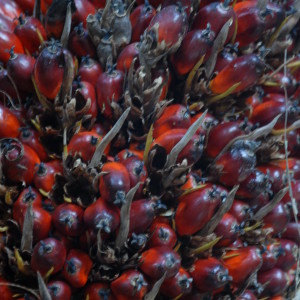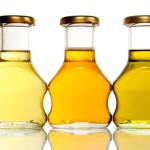Nutella in the News: but why this recurring resentment against palm oil?
After denouncing the use of palm oil in the manufacture of Nutella and therefore consumption, Segolene Royal apologized Wednesday night June 17th via Twitter. Back on this controversial ingredient.
Atlantico: Ségolène Royal has recently decided to tackle the palm oil through the Nutella, before retracting the remarks Wednesday night. To what extent is it a bad oil to health?
Guy-André Pelouze: Red palm oil is a fat that comes from pressing the fruit of the oil palm. It has been consumed for millennia. Like all oils it can then be refined to give a clear and odorless oil. Refined oil and this is true for all the oil contains very few vitamins and phenols that are important to our health. With regard to its composition and although it varies with palm cultivations this oil is rich in palmitic acid (43.5%) and oleic acid (36.6%).
The first is a saturated fatty acid (meaning that the carbon chain contains no double bond) and the second is a monounsaturated fatty acid which is characteristic of olive oil. Olive oil contains 70% oleic acid and 13% palmitic acid. To situate the beef fat in its composition contains 36% oleic acid and 26% palmitic acid and butter 24% and 31% respectively. Palm oil is a food like many others which provides calories as fatty acids. Fat is necessary to our diet and it has been abundantly proved that eating less far does not lead to losing weight.
It is often claimed that saturated fatty acids promote cardiovascular disease. This is a story that resembles Popeye, spinach and iron. This assertion is repeated like a leitmotiv, often by people who have not studied the issue, even though it is false. The determinism of cardiovascular disease is multifactorial and polygenic. If one isolates the consumption of saturated fats in statistical correlation analyzes saturated fats appear neutral or favorable or unfavorable cardiovascular risk. However tobacco, physical inactivity, overweight; obesity and diabetes type 2 are powerful risk factors for cardiovascular disease but not palm oil. It is therefore rightly authorized for consumption and use by the food industry.
On the French diet plan, what is a real risk – that is well documented today – is the movement awat from fresh food at home, to a supply of industrial products which contain many calories, lots of carbohydrates quick little bit of protein and micronutrients such as trans fatty acids … This is obesogenic consumer products and increases the risk of chronic diseases. Nutella is a product and must be obviously everyone to do the examination of personal consumption to realize the proportion of products compared to fresh food … In this area the individual variations are enormous so that average are irrelevant. Especially in children and the people living in cities, many of our citizens are beyond 80% of their caloric intake in industrial products … Besides I recall that Nutella is 56g of fast carbohydrates per 100 g of product which a significant metabolic impact. Our consumer responsibility and that of the parent must be engaged and the edicts of individual ministers can only be counterproductive.
Bruno Parmentier: The Nutella periodically the headlines and is excellent for the French head of Turk! This product of Italian origin is sold massively in France 84 000 tonnes per year, a quarter of world consumption. The Norman Villers-Ecalles plant produces 155 million cans annually, a third of world production. This small pot iconic enjoys a virtual monopoly in our country since it represents 80% of sales spread (but fortunately there is still honey and jam!). If this product is very popular for snacks for our children, it is not with the number of intellectuals who are fixated on him, more than on other leading products of the Ferrero Group (Rocher, Kinder, Mon Chéri Tic-Tac, etc.). It became for them a symbol of junk food and agribusiness disorders.
It was recently criticized in 2008 to deforest and cause the extinction of orangutans in 2009 to contain phthalates, in 2011 to write unduly on its advertisements “good for health”, etc. ; in 2012 the Senate failed to vote an amendment “Nutella” tripling the tax on palm oil, etc. It is in this vein that our Minister of Ecology has recently indulged in a skid when working on TV.
Of course, there is no doubt, this paste is very bad, nutritionally speaking: it is a concentrate of sugar and oil, most nuts, cocoa and milk, Wholesale of everything makes you fat, and is strongly additive! No doubt it is one of the causes of obesity in some children …
She heavily uses palm oil at the expense of other competing oils. In particular because of its smoothness: it is semi-solid at room temperature, its melting point is between 35 and 42 ° C, and it is stable to cooking, which facilitates work in the factory, it tastes neutral and does not go rancid. It therefore represents an excellent substitute for butter and other animal fats, vegetable and is unlike margarines.
So, Nutella is far from alone in wanting to find these qualities, so that palm oil is now massively present in our chips, croutons, soups, biscuits, baby milk, tinned sardines, broth chicken, mayonnaise, tomato sauce, cereals, chocolate, ice cream, grated cheese, sauces, fresh cream, pies pasta, ready meals, biscuits, buns, crackers and sweet, etc. Thus, 15.2 million tonnes in 1995, global production of palm oil rose to nearly 60 million in 2014.
Despite this, consumption of palm oil of French is “only” 2.8 grams per day (3.3 g / day for 3-14 years), which on average represents only 4% intake of saturated fatty acids in adults and 7% in children! Nutella is a kind of convenient scapegoat (and Italian!) Of a much broader phenomenon: the French eat too much sugar and fat, especially saturated fat (but also salt, meat, milk and alcohol …). And obesity and other diseases related to diet too rich, such as diabetes or atherosclerosis, are increasing in our country.
The Minister of Ecology said Monday evening on Canal +: “We must massively replant trees, because there has been a massive deforestation also leads to global warming must stop eating Nutella example because. is palm oil. ” How France prohibit the use of palm oil in the products he would limit this deforestation?
What other oils may eventually replace palm oil? And what do we know about their culture and their impact on health?
Guy-André Pelouze: Replacing palm oil in food production cannot be justified by nutritional considerations. It is therefore about economic and environmental issues.
However be aware that the characteristics of oils rich in saturated fat (coconut oil is another, butter too …) in areas such as pastry or biscuits helped to replace trans fatty acids. These fatty acids in partially hydrogenated fats are atherogenic as demonstrated by a series of studies over the past 50 years. They are not only atherogenic but are associated with increased all-cause mortality. So avoid returning to these trans fatty acids.
However it is possible to simulate the replacement of palm oil. If it is through vegetable oils rich in polyunsaturated fatty acids such as sunflower or safflower corn, consumption of saturated fatty acids decreases but the omega 6 fatty acids increases which poses other problems and no evidence for a benefit. For oils rich in omega 3 such as rapeseed substitution is favorable because our diet is generally unbalanced in favor of omega 6 but the characteristics of this oil are not suitable for cakes and it is too oxidized to frying.
Overall the best alternative especially in pastry is butter. But the intake of saturated fatty acids is essentially the same. This is called taste and cost but no health benefits because it must repeat the saturated fatty acids widely consumed in France are not associated with cardiovascular mortality.
Bruno Parmentier: One of the benefits of palm oil productivity per hectare, well above its direct competitors (soybean, rapeseed and sunflower): as long as you select terroirs, oil palm needs July-October times less area planted to produce as much oil as soybeans … The difference is much smaller in terms of productivity per hour of work, as soy or canola are grown on vast fields with high mechanization, while the crop is still manual on oil palm. But precisely it is produced in countries with cheap labor!
Gold was produced in 2012 54 million tons against 43, 24 and 14 million soybean, rapeseed and sunflower (and only 3 olives!). It is therefore more than likely we would have used a lot more surface area if we had preferred to use other oils as palm … In particular we know that in Latin America, the soya expansion also poses many environmental problems.
Given the high concentration of production of palm oil, which comes to 85% from two countries, Indonesia and Malaysia, was massive deforestation in these two countries, which obviously poses enormous damage environmental. But strong pressure from different NGOs such as Greenpeace, however, been effective with large companies like Ferrero, who care about their image among European consumers have made great efforts in recent years to meet the RSPO charter (Roundtable for Sustainable Palm Oil). It is found on the website of Greenpeace Philippines the following favorable assessment (which is far from the case with other companies analyzed): “Ferrero has established a most progressive sector policies against deforestation and defined a ambitious program for 2015 for its implementation. He pledged to traceability for all palm oil used in its products and plans to report publicly on its achievements every six months. “ Hence the coaster of our Minister!
In general, the massive increase in the number of members of the middle classes in the world, especially in emerging countries such as China and India led to a completely new pressure on natural resources as the first manifestation of increasing the standard of living, it is the change in eating habits, for meat foods, milk, sugar and fat.
It is therefore particularly important that in countries where we eat too much, as quickly as possible is to reduce the excessive consumption of these products. From this point of view, both for our own health and the health of the planet, the Minister is quite right, just under Nutella would be excellent, but also fewer sweets in general, and also less meat and fewer dairy products!
The United States have decided to ban Tuesday, June 17 trans fatty acids in food products. Are they more harmful than palm oil?
Guy-André Pelouze: Two important points. The US has in the past forced industrial labeling of trans fatty acids. The consumer must know how much trans fatty acids are found in 100 g of the product for sale. It is unfortunate that we did not have that information in Europe and particularly in France. This provision is clearly insufficient because it cannot be applied to drinks, for example. Or frying oils and other preparations may contain trans fatty acids without the consumer knowing. Logically FDA now comes to the ban. It will be three years, which is very long. The best advice we can give is to the French not to consume trans fats in any form whatsoever. And the best advice to the European regulator is that of quickly address the issue and to protect consumers.
The second part of your question concerns the comparison with palm oil. Trans fats are the product of an industrial partial hydrogenation of unsaturated fats. This requires hydrogen, energy and a nickel catalyst. Trans fats are clearly harmful to humans. It is a fact well documented. Their prohibition is logical but consumers can protect themselves and their children by avoiding industrial products containing partially hydrogenated fats. Drinks are more difficult because the products freely circulating in Europe contain and are prepared, within the framework of catering.
However palm oil, a vegetable oil is not dangerous for health and is recognized as such. The only rational comment that the current situation inspires me is to amaze me that some are picking on a fat which is neutral and that the same people leave us to the production, use and consumption of trans fatty acids …
Why is palm oil, with associations and public authorities, remains the object of fantasy even when that reality looks different?
Alain Karsenty: The enormous development of oil palm areas in recent years poses real problems of deforestation. The planters target wooded areas as they not only provide a favorable precedent for the palm tree, but they can also sell wood from felled forests, which is very lucrative. It is true that large companies are trying more and more to source responsibly, with labels such as the RSPO (Roundtable on palm oil) or, more recently, the desire to have chains “zero deforestation” of supply. These trends are very promising, but we are still far, globally, the expected decoupling growth of oil palm areas and deforestation. Now it is useless to demonize a plant which, when planted in non-forest areas, often allows, thanks to its outstanding productivity, smallholders farmers out of poverty. The problem is the lack of political will of governments to develop rural areas, often yielding to lobbies of oil palm companies that prefer to dwell on the forest areas.
There remains the problem of oil palm itself, on one hand, has the highest levels of saturated fatty acid (“bad fat”), but on the other, does not require – on the contrary, other vegetable oils – to be hydrogenated to be semi-solid. However, this industrial process entails the creation of trans fats, the worst for health. Palm oil does not contain. This ambivalence of palm oil with regard to the new expectations of consumers (“health through food”) certainly contribute to this unjustified bad reputation.
Source : ATLANTICO










Leave a Reply